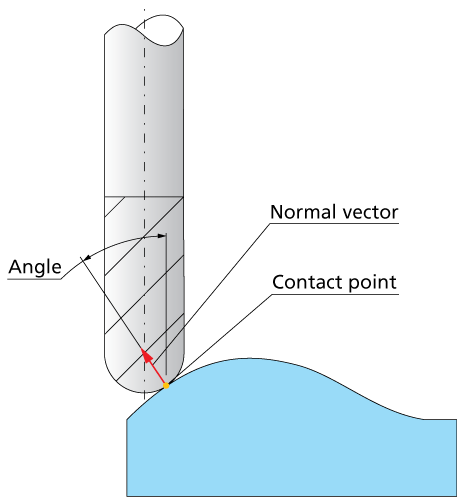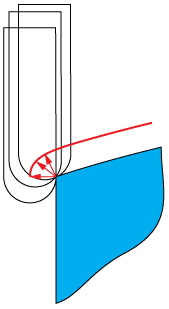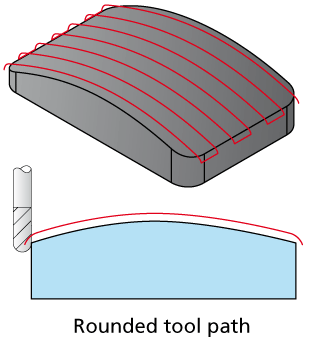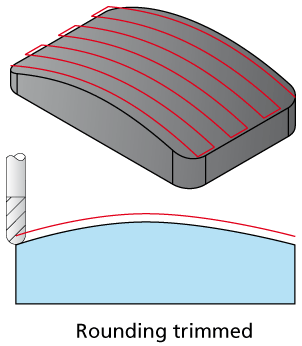Working area definition via Angle limits
This option enables you to define the working area by surface inclination angle range. Using this method, you can apply various machining strategies to model areas with different inclination. For example, you can machine all shallow areas with the Linear finishing strategy and all steep areas with the Constant Z strategy.
Angle limit calculation
In each point where the tool contacts the machining surface, SolidCAM determines the normal vector at the contact point, directed to the tool sphere center (for ball-nosed tools); for end mills with rounded corners, the vector is directed from the contact point to the radius center. The angle of this vector relative to the Z-axis is used for the angle limits calculation.

The Angle limits section of the Working Area dialog box enables you to define the angle range.
The Minimum angle value defines the lower limit of the angle range.
The Maximum angle value defines the upper limit of the angle range.
A particular feature of the Angle limits method is related to machining of model edges: it is impossible to determine a single contact point between the edge and the tool surface. The tool rolls over the edge, continuously keeping in contact until the angle of the normal vector at the contact point is in the defined range.

The resulting tool path is rounded. Such tool path rounding causes the breaking of the sharp corners. The machining time is also increased.
The Trim rounding option enables you to avoid unnecessary tool path rounding.
When this check box is selected, the tool path gets trimmed at the point where the tool axis is coincident to the surface boundary.
|
|

